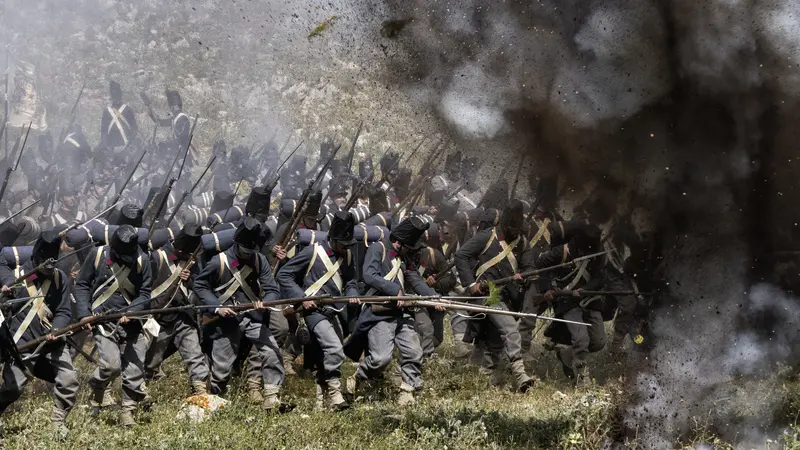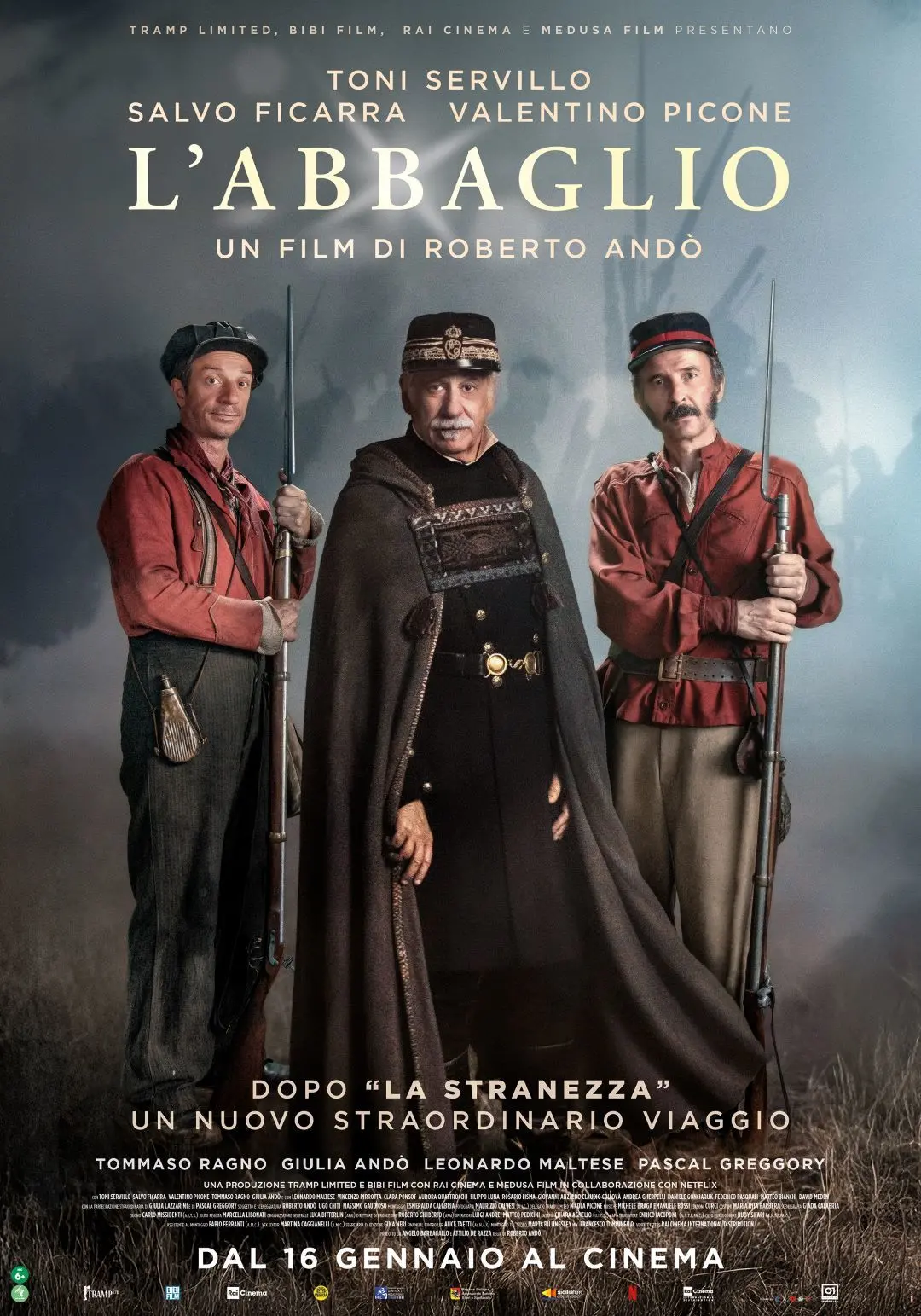

After the success of La stranezza, Roberto Andò returned to Palermo and other places in Sicily for L'abbaglio. For outdoor filming in the city centre, via Maqueda and piazza Pretoria were taken back to the 19th century with cars replaced by carriages and horses, the asphalt covered with beaten earth and extras in the clothing of the aristocrats or commoners of the time. Locations also included the entrance to Palazzo delle Aquile; the stretch that leads from Quattro Canti to piazza Bellini (featuring a fake plasterboard fountain); Palazzo Alliata di Villafranca; Piazza Bolognini; and the hill of Bellolampo, located behind the plain where Palermo stands, transformed into a battlefield.
Other locations included: Trapani and the borgo of Erice; Contessa Entellina, Ficuzza, Caltabellotta, Palazzo Adriano.
The landscape, as the director noted in Cannes where he previewed some images of the film, is central to the film: “It is an unusual Sicily, very different to what we are used to seeing. A green Sicily, featuring woods and rivers, and inaccessible places that the crew reached thanks to the assistance and vehicles of the forestry unit”.
After the success of La stranezza, Roberto Andò returned to Palermo and other places in Sicily for L'abbaglio. For outdoor filming in the city centre, via Maqueda and piazza Pretoria were taken back to the 19th century with cars replaced by carriages and horses, the asphalt covered with beaten earth and extras in the clothing of the aristocrats or commoners of the time. Locations also included the entrance to Palazzo delle Aquile; the stretch that leads from Quattro Canti to piazza Bellini (featuring a fake plasterboard fountain); Palazzo Alliata di Villafranca; Piazza Bolognini; and the hill of Bellolampo, located behind the plain where Palermo stands, transformed into a battlefield.
Other locations included: Trapani and the borgo of Erice; Contessa Entellina, Ficuzza, Caltabellotta, Palazzo Adriano.
The landscape, as the director noted in Cannes where he previewed some images of the film, is central to the film: “It is an unusual Sicily, very different to what we are used to seeing. A green Sicily, featuring woods and rivers, and inaccessible places that the crew reached thanks to the assistance and vehicles of the forestry unit”.

In Quarto, Giuseppe Garibaldi begins the adventure of “the Thousand”, surrounded by the enthusiasm of young idealists who have come from all the regions of Italy, and a faithful group of officers, which includes a new face, the Palermo colonel Vincenzo Giordano Orsini. The recruits include two Sicilians: Domenico Tricò, a farmer who emigrated to the North, and Rosario Spitale, an illusionist. After landing in Marsala in Sicily, the Thousand engage with the Bourbon army, whose numerical superiority is immediately evident. It seems almost impossible for the revolutionaries to break through the enemy defence and reach Palermo. But on the point of retreat, Garibaldi comes up with an ingenious plan. He entrusts a diversionary manoeuvre to Colonel Orsini, who sets up a column of wounded with a small group of soldiers: their very delicate task is to make Jean-Luc Von Mechel, the Swiss commander of the King’s army, believe that the general is retreating into the island’s interior. So begins a game of chess, played out on the edge of the imponderable, whose final outcome is both paradoxical and surprising.